Could Not Install Packages Due To An Oserror
When trying to install packages on your computer, you may encounter an error message stating, “could not install packages due to an OSError.” This error can be frustrating and prevent you from installing important software or updates. In this article, we will delve into the causes of this error message and provide solutions to help you overcome it.
I. Understanding the error message: “could not install packages due to an OSError”
The error message “could not install packages due to an OSError” indicates that there was an issue preventing the successful installation of the desired packages. OSError stands for Operating System Error, indicating that the error is related to the operating system rather than the specific package itself.
II. Causes of the OSError when installing packages
There can be several reasons why you encounter an OSError when installing packages:
1. Insufficient permissions to install packages: This error can occur if you do not have the necessary permissions to make changes to your system, such as installing or modifying software.
2. Incompatibility between the package and the operating system: Certain packages may only be compatible with specific operating systems. Trying to install an incompatible package can result in an OSError.
3. Lack of disk space preventing package installation: If your computer’s hard drive is running low on disk space, it can hinder the installation of new packages.
4. Presence of conflicting dependencies causing installation failure: Dependencies are additional software libraries or components required by a package to function properly. Conflicting dependencies can lead to installation failures.
5. Antivirus or firewall software interfering with package installation: Sometimes, antivirus or firewall software can block or interfere with the installation process, resulting in an OSError.
III. Insufficient permissions to install packages
If you receive an OSError message that says, “Could not install packages due to an OSError: (WinError 5) Access is denied,” it means you do not have sufficient permissions to install the packages. To resolve this issue, try running the installation process with administrator privileges.
Here’s how to run the installation as an administrator:
1. Right-click on the installer file and select “Run as administrator.”
2. Follow the prompts to install the packages.
IV. Incompatibility between the package and the operating system
If you come across an OSError message saying, “Could not install packages due to an OSError: (WinError 2) the system cannot find the file specified,” it indicates that the package you are trying to install is not compatible with your operating system. In this case, you should check the compatibility requirements of the package and verify if your operating system meets them.
If the package is indeed compatible, ensure that you have downloaded the correct installer file and try reinstalling it.
V. Lack of disk space preventing package installation
When you receive an OSError message like, “Could not install packages due to an OSError: cannot move the non-empty directory,” it suggests that there is not enough available disk space to install the packages. You should check your computer’s disk space and free up some storage if necessary.
VI. Presence of conflicting dependencies causing installation failure
Conflicting dependencies can result in installation failures and display an OSError. To address this issue, you can try updating or removing conflicting dependencies manually. Alternatively, you can use package management tools that automatically resolve dependencies during the installation process.
VII. Antivirus or firewall software interfering with package installation
If you encounter an OSError due to antivirus or firewall software blocking the installation, you should temporarily disable these security programs and attempt the installation again. Remember to re-enable them after completing the installation to ensure your computer remains protected.
VIII. Resolving the OSError by running the installation with administrator privileges
If you face an OSError that says, “Could not install packages due to an OSError: (Errno 22) Invalid argument,” you can try running the installation process with administrator privileges, as mentioned earlier. This may help overcome the insufficient permissions issue causing the error.
IX. Seeking additional support and troubleshooting options for package installation issues
If you still encounter difficulties installing packages and cannot resolve the OSError on your own, it is recommended to seek additional support. You can reach out to the software provider or consult online forums and communities where users discuss similar issues. Alternatively, you can consider contacting technical support for further troubleshooting options specific to your operating system and package installation scenario.
FAQs:
1. How do I fix an OSError “Permission denied” error when installing packages?
If you receive an OSError with the message “Cannot install packages due to an OSError Errno 13 Permission denied,” try running the installation with administrator privileges. Right-click on the installer file and select “Run as administrator.”
2. What should I do if the error message mentions the “–user” install flag?
If the error message includes “Error: cannot perform a ‘–user’ install,” it means that the specified site-packages are not visible in your virtual environment. In this case, you may need to modify the installation command or consult the package’s documentation for alternative installation methods.
3. How can I resolve the warning “failed to write executable – trying to use .deleteme logic”?
If you encounter the warning “failed to write executable,” it suggests a problem related to writing executable files during the installation process. This can be addressed by running the installation with administrator privileges or seeking assistance from the package’s support channels.
In conclusion, encountering an OSError when installing packages can be frustrating, but understanding the causes and implementing the suggested solutions can help you overcome these issues. By following the provided steps and seeking additional support if necessary, you can successfully install the desired packages on your operating system.
How To Fix Could Not Install Packages Due To An Oserror In Python
Why Pip Is Not Working?
Introduction:
Pip (Package Installer for Python) is a widely-used tool for managing and installing Python packages. It allows developers to effortlessly install, upgrade, and uninstall packages from the Python Package Index (PyPI). However, there are instances where users might encounter issues with pip not working as expected. In this article, we will explore some common reasons why pip may fail to work and provide potential solutions to help you resolve the issue.
Reasons why pip may not be working:
1. Incorrect Installation:
One of the potential reasons for pip not working could be an incorrect installation. If pip is not properly installed or misconfigured, it can lead to errors. Firstly, ensure that you have installed the Python interpreter correctly and that pip is included. You can verify this by running the command “python –version” and “pip –version” in your terminal. If the versions are displayed correctly, move to the next troubleshooting steps.
2. Outdated pip version:
Using an outdated version of pip can cause compatibility issues, preventing it from working correctly. To resolve this, it is recommended to upgrade pip to the latest version. Ideally, you can do this by running the command “pip install –upgrade pip”. This will update your pip to the latest version, ensuring compatibility with the latest Python packages and resolving any potential bugs.
3. Connectivity issues:
Pip relies on an active internet connection to fetch and install packages from PyPI. If you are behind a firewall or have limited connectivity, it may prevent pip from working properly, resulting in errors during package installation. Checking your internet connection and ensuring unrestricted access to the PyPI repository can help diagnose the issue. If you’re behind a corporate network, consult with your network administrator to ensure proper access.
4. Proxy configuration:
Sometimes, working behind a proxy can also cause pip to fail. In such cases, you need to configure pip to work with your proxy settings. This can be done by setting the HTTP_PROXY and HTTPS_PROXY environment variables. Consult with your network administrator or IT department to obtain the correct proxy settings and configure them appropriately for pip to function properly behind a proxy.
5. Cache inconsistencies:
At times, pip may encounter cache inconsistencies that prevent it from working smoothly. Caches store information about installed packages and their versions, which can become corrupt or outdated, leading to errors. Clearing the pip cache can resolve this issue. Run the command “pip cache purge” to remove any cached files that may be causing the problem. Afterward, try running pip again to see if it resolves the pip not working issue.
6. Package index issues:
The PyPI server, which hosts Python packages, can sometimes experience issues that affect pip’s normal operation. These issues can lead to pip not working as expected. In such cases, it is essential to check the status of the PyPI server to determine if it is running properly. Websites like “https://status.python.org” can provide real-time information about the availability of PyPI. If the server is currently experiencing problems, consider trying again later.
Frequently Asked Questions (FAQs):
Q1. How can I install pip?
A1. Pip is usually bundled with Python installations. Check if pip is installed by running the command “pip –version” in your terminal. If pip is not found, you can install it by following the official documentation for your specific operating system.
Q2. Does upgrading pip affect my installed packages?
A2. Upgrading pip does not directly affect your installed packages. However, it is always recommended to create a virtual environment before upgrading pip or installing new packages to isolate your projects and avoid any potential conflicts.
Q3. Why does pip show a “Permission Denied” error?
A3. A “Permission Denied” error typically occurs when you try to install a package globally without proper administrative privileges. In such cases, you can use the “–user” flag to install packages for the current user only, avoiding the need for administrative privileges.
Q4. Why am I seeing a “Command Not Found” error for pip?
A4. The “Command Not Found” error suggests that pip is either not installed or is not added to your system’s PATH variable. Ensure that the pip installation directory is included in the PATH variable to resolve this issue.
Conclusion:
Pip is an indispensable tool for managing Python packages, and understanding why it may not be working can save you valuable time and frustration. By identifying and resolving common issues related to installation, outdated versions, connectivity, proxies, cache inconsistencies, and package index problems, you can ensure a smooth experience with pip. Remember to always stay up-to-date with the latest pip version and refer to the official documentation and online forums for more detailed troubleshooting steps. Happy coding!
How To Install Pip On Command Line?
Python is a versatile programming language that is widely used for various applications. One of the most valuable features of Python is its extensive package ecosystem, which allows users to easily install and use third-party libraries to enhance their projects. To manage and install these libraries, Python developers often rely on a package manager called “pip”. In this article, we will guide you through the steps to install pip on the command line, ensuring that you can seamlessly integrate additional libraries into your Python projects.
Why Do I Need to Install Pip?
Before we dive into the installation process, you might be wondering why you need pip in the first place. Pip is a package manager for Python and is used to install, uninstall, and manage third-party libraries. Python packages are pre-built modules or files that contain additional functionality, and they can significantly simplify your coding process. By utilizing pip, you can easily browse, install, and manage these packages, saving you valuable time and effort.
Prerequisites for Installing Pip:
Before you begin installing pip, there are some prerequisites you should check for:
1. Verify Python Installation: Ensure that you have Python installed on your machine by opening the command line and typing `python –version`. If Python is installed, it will display the version number. If you do not have Python installed, you will need to download and install it from the official Python website.
2. Check if pip is already installed: Some Python installations come with pip pre-installed. To verify if pip is already installed, type `pip –version` in the command line. If pip is installed, it will display the version number. If it’s not installed, you will receive an error message.
Steps to Install Pip on Command Line:
Once you have fulfilled the prerequisites, you are ready to install pip. Follow these steps to complete the installation process:
Step 1: Open Command Line:
Open your preferred command-line interface. This may be the Command Prompt on Windows, Terminal on macOS, or any other terminal emulator for Linux.
Step 2: Update the Package Manager:
To ensure that you have the latest version of pip, it is recommended to update your package manager, which may vary depending on your operating system.
On macOS and Linux, you can use the following command:
“`
sudo apt-get update
“`
On Windows, you can use:
“`
pip install –upgrade pip
“`
This will update the package manager to its latest version.
Step 3: Install Pip:
To install pip on your command line, enter the following command:
“`
pip install pip
“`
This command will download and install pip on your machine.
Step 4: Verify the Installation:
To confirm that pip has been successfully installed, type the following command in the command line:
“`
pip –version
“`
If pip is successfully installed, it will display the version number and other related information.
Frequently Asked Questions about Installing Pip:
Q1: Can I install pip without an internet connection?
A1: No, pip requires an internet connection to download and install packages from the Python Package Index (PyPI). If you do not have an internet connection, you may download packages manually and install them locally.
Q2: How do I upgrade pip to the latest version?
A2: You can upgrade pip to the latest version by using the `pip install –upgrade pip` command. This will download and install the newest version available.
Q3: I encountered permission errors during installation. How can I resolve this issue?
A3: On macOS and Linux, you may need to use `sudo` before the installation command to gain administrative privileges. However, exercise caution when using `sudo` as it grants unrestricted access.
Q4: Can I use pip with virtual environments?
A4: Yes, pip works seamlessly with virtual environments. Virtual environments allow you to create isolated Python environments, each with its own set of installed packages. You can activate a virtual environment using the `source venv/bin/activate` command on macOS and Linux or `venv\Scripts\activate` on Windows.
Q5: How can I install specific versions of a package using pip?
A5: To install a specific version of a package, you can use the following command:
“`
pip install package_name==version_number
“`
Replace `package_name` with the desired package name and `version_number` with the specific version number you want to install.
Conclusion:
Installing pip on the command line is an essential step for Python developers who want to take advantage of the vast range of packages available in the Python ecosystem. By following the steps outlined in this article, you can easily install pip and unlock the ability to readily access and manage third-party libraries. Whether you are a beginner or an experienced Python developer, having pip at your disposal will undoubtedly enhance your coding experience.
Keywords searched by users: could not install packages due to an oserror Could not install packages due to an OSError: (WinError 5) Access is denied, Could not install packages due to an OSError: (WinError 2) the system cannot find the file specified, Could not install packages due to an OSError cannot move the non empty directory, Error: Could not install packages due to an OSError: (Errno 22) Invalid argument, Could not install packages due to an EnvironmentError, Could not install packages due to an OSError Errno 13 Permission denied, Error: can not perform a ‘–user’ install –user site-packages are not visible in this virtualenv, warning: failed to write executable – trying to use .deleteme logic
Categories: Top 77 Could Not Install Packages Due To An Oserror
See more here: nhanvietluanvan.com
Could Not Install Packages Due To An Oserror: (Winerror 5) Access Is Denied
If you’re a Python developer, you may have encountered the frustrating error message “Could not install packages due to an OSError: (WinError 5) Access is denied.” This error typically occurs when trying to install a package using pip or any other package manager on Windows. In this article, we’ll delve into the possible causes of this error, its potential solutions, and address some frequently asked questions about it.
Understanding the Error Message:
Before we proceed, let’s break down the error message to gain a better understanding of its implications. The error message “Could not install packages due to OSError: (WinError 5) Access is denied” indicates that the installer process lacks sufficient permissions to write or modify files on your Windows system.
Potential Causes of the Error:
1. Insufficient Privileges: The user account that you’re using might lack the necessary administrative privileges to modify system files. Without proper permissions, the package manager (such as pip) will be unable to install packages.
2. Anti-virus or Security Software: In some cases, anti-virus or security software installed on your Windows system may restrict the installation process, resulting in the “Access is denied” error.
3. File/Directory Permissions: The specific file or directory where the package is being installed might have restricted access permissions, preventing the package manager from writing to it.
4. User Account Control (UAC) Restrictions: User Account Control is a security feature in Windows that helps prevent unauthorized changes to your system. Sometimes, UAC may interfere with the installation process and cause the “Access is denied” error.
Solutions to Resolve the Error:
Now that we understand the potential causes, let’s explore some solutions to resolve the OSError: (WinError 5) Access is denied error when installing packages:
1. Run as Administrator: The simplest solution is to run the package manager (e.g., pip) as an administrator. Right-click on the command prompt or terminal and select “Run as administrator.” This grants the necessary privileges to modify system files and directories.
2. Disable Anti-virus/Security Software: Temporarily disable any anti-virus or security software installed on your system and try installing the package again. Remember to re-enable the software after the installation process is complete.
3. Check File/Directory Permissions: Verify that the file or directory where the package is being installed has the appropriate read and write permissions. You can modify the permissions by right-clicking on the file/directory, selecting “Properties,” and navigating to the “Security” tab. Ensure that your user account has suitable permissions for the package installation.
4. Adjust User Account Control (UAC) Settings: If the User Account Control is causing conflicts, adjust the UAC settings to allow the installation process. Go to the Control Panel, search for “User Account Control,” and set it to a lower level. Keep in mind that modifying UAC settings may reduce your system’s security, so exercise caution.
Frequently Asked Questions (FAQs):
Q1. Is this error specific to Python?
A1. No, this error can occur with any package manager or software installer on Windows, not just Python.
Q2. Will running pip with elevated privileges always solve the problem?
A2. Running pip as an administrator resolves most cases, but it’s not a guaranteed solution. Ensure that you have the necessary permissions and that no other factors are causing conflicts.
Q3. Why does anti-virus software interfere with installing packages?
A3. Anti-virus software aims to protect your system by monitoring and restricting potentially malicious activities. Sometimes, it mistakenly categorizes package installations as suspicious and blocks them.
Q4. Can I permanently disable UAC to avoid this error?
A4. While it is possible to disable UAC to avoid such errors, it is not recommended. UAC is an important security feature, and completely disabling it can leave your system vulnerable to unauthorized changes.
Q5. Are there alternative package managers that don’t encounter this error on Windows?
A5. While alternative package managers exist, such as Conda or Anaconda, they may also encounter similar permission-related issues. Therefore, the solutions provided in this article generally apply to most package managers.
Conclusion:
Encountering the “Could not install packages due to an OSError: (WinError 5) Access is denied” error can be frustrating when trying to install packages using a package manager like pip. By following the solutions outlined in this article, addressing potential causes, and understanding the error message, you can effectively troubleshoot and resolve this issue. Remember to ensure proper permissions, run the package manager with administrator privileges, and temporarily disable any restrictive security software that may interfere with the installation process.
Could Not Install Packages Due To An Oserror: (Winerror 2) The System Cannot Find The File Specified
If you’ve encountered the error message “Could not install packages due to an OSError: (WinError 2) the system cannot find the file specified” while trying to install packages on Windows, you’re not alone. This is a common issue faced by many developers and users. In this article, we will dive deep into the details of this error, its causes, and possible solutions.
What does the error mean?
This error occurs when the installation process is unable to find the required file or directory specified. When you attempt to install packages using package managers like pip, conda, or virtualenv, they rely on the operating system to locate the necessary files. If the system fails to find the file, it raises an OSError.
Causes of the error:
1. Typographical errors: The most basic cause of this error is a simple typo in the command or file path. Double-check the command you are executing or the file path you are using to ensure they are correct.
2. Missing dependencies: Some packages have dependencies that need to be installed before the main package can be installed. If these dependencies are not installed or cannot be found, you may encounter this error. Make sure all required dependencies are installed.
3. Incorrect Python environment: If you are working with virtual environments, make sure you have activated the correct environment before installing packages. Installing packages in the wrong environment can lead to this error.
4. Restricted permissions: The user account executing the installation command may not have sufficient permissions to access the required files. This can occur if you are installing packages in a system directory or using a restricted user account. Try running the installation command with administrative privileges.
Solutions:
1. Double-check command and file paths: Carefully review the command you are executing or the file path you are using. Ensure there are no typos or mistakes. Copying and pasting the command from the official documentation or reliable sources can help avoid typographical errors.
2. Install missing dependencies: If the error message explicitly mentions missing files or dependencies, install them before trying to install the main package. Use the appropriate package manager to install the required dependencies.
3. Activate the correct environment: When working with virtual environments, ensure you have activated the correct environment before installing packages. Activate the environment using the appropriate command for your environment manager, such as ‘conda activate’ for conda or ‘source env/bin/activate’ for virtualenv.
4. Run the command with administrative privileges: If you have a restricted user account or are installing packages in system directories, try running the installation command with administrative privileges. Right-click on the command prompt or terminal and select “Run as administrator” to execute the command with elevated permissions.
5. Check file permissions: Ensure that the user account executing the command has the necessary permissions to access and modify the required files. If not, adjust the permissions accordingly.
FAQs:
Q1: I am certain the command and file path are correct, why am I still encountering this error?
A: In some cases, this error can occur due to issues with the package manager itself or conflicts with other software installed on your system. Try restarting your computer and attempting the installation again. If the issue persists, consider using a different package manager or seek community support to troubleshoot further.
Q2: Can this error be resolved by reinstalling Python?
A: Reinstalling Python itself is unlikely to resolve this specific error. However, if the error is occurring due to incompatible or missing dependencies related to Python, reinstalling Python and setting up a fresh environment may help.
Q3: Are there alternative package managers that may handle the installation better?
A: Yes, there are alternative package managers available, such as pipenv or poetry, which provide more robust dependency management and installation capabilities. Consider exploring these alternatives if you continue to encounter issues with the default package managers.
In conclusion, the “Could not install packages due to an OSError: (WinError 2) the system cannot find the file specified” error is a common issue faced by Windows users during package installations. By double-checking commands and paths, installing missing dependencies, activating the correct environment, running with administrative privileges, and checking file permissions, you can resolve this error and continue with your package installations smoothly.
Could Not Install Packages Due To An Oserror Cannot Move The Non Empty Directory
The process of installing packages in any programming language is usually straightforward and seamless. However, occasionally you may encounter an error message that says “Could not install packages due to an OSError: Cannot move the non-empty directory.” This error can be frustrating, especially when you’re in the middle of an important project or trying to set up a new development environment. In this article, we will explore the causes of this error and provide some possible solutions to help you overcome it.
Understanding the Error Message
Before diving into the possible causes and solutions, let’s first understand the meaning behind the error message itself. Essentially, the error is indicating that there is a directory that cannot be moved because it is not empty. When installing packages, the installation process often involves moving files and directories to specific locations within your system. However, if a directory is being used or contains files that are essential to other processes, the installation process will fail to move it, resulting in the aforementioned error message.
Causes of the OSError: Cannot Move the Non-Empty Directory Error
There are several potential causes for encountering this error. Here are a few common scenarios:
1. Permission Issues: Insufficient or incorrect permissions can prevent the installation process from moving directories.
2. Open Files or Processes: If a file or process within a directory is currently being used, it cannot be moved until it is no longer in use.
3. Dependencies or Interference: Sometimes, dependencies between packages or other installations can interfere with the moving of directories, causing the error.
4. Operating System Limitations: Certain operating systems have restrictions on moving directories that are in use, leading to the error message.
Troubleshooting the OSError: Cannot Move the Non-Empty Directory Error
Now that we understand the possible causes, let’s explore some troubleshooting steps you can take to resolve the issue:
1. Check Permissions: Ensure that the user account you are using to install the packages has the necessary permissions. If not, try running the installation process with administrative privileges.
2. Close Open Files or Processes: Identify any files or processes that may be using the directory you are trying to move, and close or terminate them. After doing so, attempt the package installation again.
3. Remove Interfering Packages: If you suspect that there may be conflicting packages or installations, uninstall or disable them temporarily and then try the installation again. This will help identify if the conflict is indeed the cause of the error.
4. Check Disk Space: Confirm that you have enough available disk space to perform the installation. Lack of disk space can sometimes result in the OSError.
5. Update Packages and Dependencies: Ensure that all packages and dependencies are up to date. Outdated versions can sometimes cause conflicts that lead to errors during the installation process.
6. Use a Virtual Environment: Consider using a virtual environment specific to your project. Virtual environments provide an isolated workspace with its own set of packages and dependencies, reducing the chances of conflicts.
FAQs
Q1: Can I simply delete the directory that cannot be moved?
A1: Deleting the directory may not be a viable solution since it may contain important files or processes required by your system. It’s important to identify the root cause of the error and attempt appropriate troubleshooting steps mentioned above instead of deleting the directory.
Q2: I tried re-installing Python, but the error persists. What should I do?
A2: Simply re-installing Python may not resolve the issue, as the error is likely caused by specific package installations rather than the Python installation itself. Make sure to focus on troubleshooting the package installation process instead.
Q3: Could this error be caused by an antivirus or security software?
A3: It’s possible. Some security software or antivirus programs may interfere with the package installation process, preventing directories from being moved. Temporarily disabling or adding exceptions for the package installation process may help resolve the issue.
Q4: Could a system restart fix the error?
A4: While it’s worth trying, a system restart alone may not resolve the issue. It’s recommended to follow the troubleshooting steps mentioned earlier to determine the root cause and resolve the error more effectively.
In conclusion, encountering the “Could not install packages due to an OSError: Cannot move the non-empty directory” error can be frustrating. However, by understanding the causes and following the troubleshooting steps mentioned above, you can overcome this obstacle and successfully install the desired packages. Remember to be patient and systematic in identifying the root cause and applying the appropriate solution.
Images related to the topic could not install packages due to an oserror
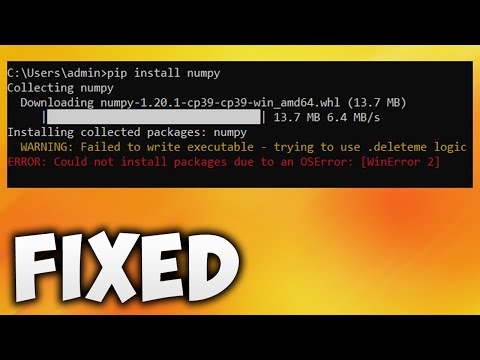
Found 44 images related to could not install packages due to an oserror theme
![python - Could not install packages due to an EnvironmentError: [Errno 13] - Stack Overflow Python - Could Not Install Packages Due To An Environmenterror: [Errno 13] - Stack Overflow](https://i.stack.imgur.com/HgLQo.png)
![pip ||ERROR: Could not install packages due to an EnvironmentError: [WinError 5] Access is denied: - YouTube Pip ||Error: Could Not Install Packages Due To An Environmenterror: [Winerror 5] Access Is Denied: - Youtube](https://i.ytimg.com/vi/En9YUSPgOBQ/mqdefault.jpg)
![Could not install packages due to an OSError [FIX] - YouTube Could Not Install Packages Due To An Oserror [Fix] - Youtube](https://i.ytimg.com/vi/rKYRcwbFp6Y/maxresdefault.jpg)

![tensorflow - Could not install packages due to an EnvironmentError: [WinError 5] Access is denied: - Stack Overflow Tensorflow - Could Not Install Packages Due To An Environmenterror: [Winerror 5] Access Is Denied: - Stack Overflow](https://i.stack.imgur.com/S3Gto.png)
![python - Could not install packages due to an EnvironmentError: [Errno 2] No such file or directory \\METADATA - Stack Overflow Python - Could Not Install Packages Due To An Environmenterror: [Errno 2] No Such File Or Directory \\Metadata - Stack Overflow](https://i.stack.imgur.com/sieGP.png)
![python - Could not install packages due to an EnvironmentError: [Errno 13] - Stack Overflow Python - Could Not Install Packages Due To An Environmenterror: [Errno 13] - Stack Overflow](https://i.stack.imgur.com/uNqZr.png)
![python - Could not install packages due to an OSError: [Errno 2] No such file or directory: '/C:/Windows/TEMP/abs_e9b7158a-aa56-4a5b-87b6-c00d295b01fanefpc8_o/ - Stack Overflow Python - Could Not Install Packages Due To An Oserror: [Errno 2] No Such File Or Directory: '/C:/Windows/Temp/Abs_E9B7158A-Aa56-4A5B-87B6-C00D295B01Fanefpc8_O/ - Stack Overflow](https://i.stack.imgur.com/ns80e.png)
![tensorflow - Could not install packages due to an EnvironmentError: [WinError 5] Access is denied: - Stack Overflow Tensorflow - Could Not Install Packages Due To An Environmenterror: [Winerror 5] Access Is Denied: - Stack Overflow](https://i.stack.imgur.com/s7Lye.png)
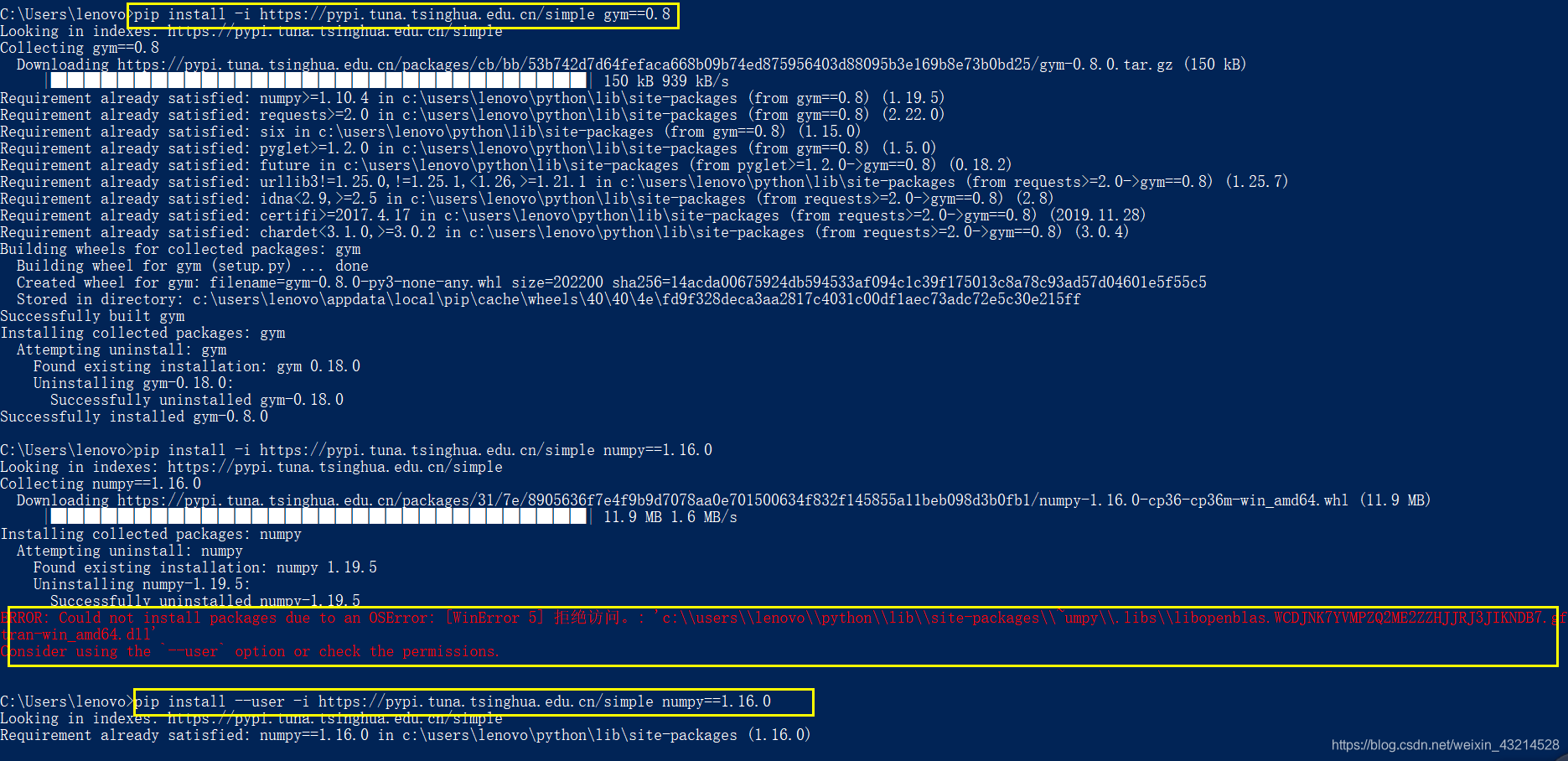

![Could not install packages due to an OSError: [Errno 122] Disk quota exceeded - Replit Help - Replit Ask Could Not Install Packages Due To An Oserror: [Errno 122] Disk Quota Exceeded - Replit Help - Replit Ask](https://global.discourse-cdn.com/business7/uploads/replitteams/original/2X/f/f401f250d7cd1789b5ab1383e66eef2903bd7768.png)


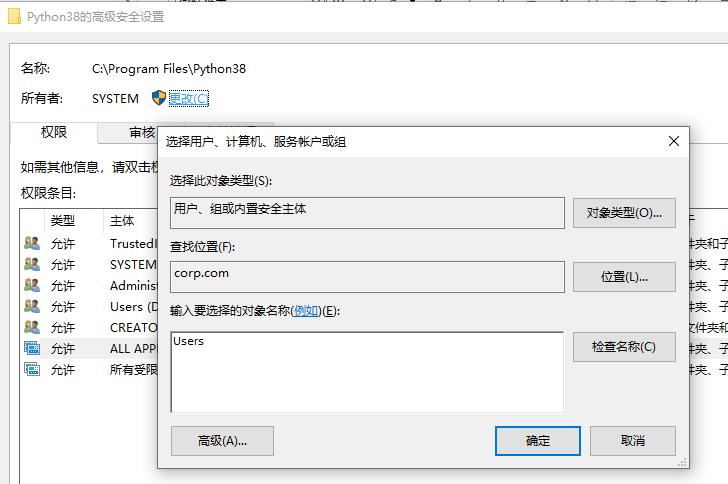

![pipインストール時に”ERROR: Could not install packages due to an OSError: [WinError 5] アクセスが拒否されました。”と出るときの対処法【Anaconda】 | まにゅまるスクリプト。 Pipインストール時に”Error: Could Not Install Packages Due To An Oserror: [Winerror 5] アクセスが拒否されました。”と出るときの対処法【Anaconda】 | まにゅまるスクリプト。](https://manumaruscript.com/wp-content/uploads/2021/05/8763036fe0dd3bc4815657efc5450cad.png)

![오류 해결] ERROR: Could not install packages due to an OSError: [Errno 2] No such file or directory: 'c:\\users\\pc2\\anaconda3\\envs\\largeea\\lib\\site-packages \\numpy-1.23.5.dist-info\\METADATA' 오류 해결] Error: Could Not Install Packages Due To An Oserror: [Errno 2] No Such File Or Directory: 'C:\\Users\\Pc2\\Anaconda3\\Envs\\Largeea\\Lib\\Site-Packages \\Numpy-1.23.5.Dist-Info\\Metadata'](https://blog.kakaocdn.net/dn/bwCSGf/btr6FgaLM3F/cUZUVnONe7gbIIHEcUZTh1/img.png)


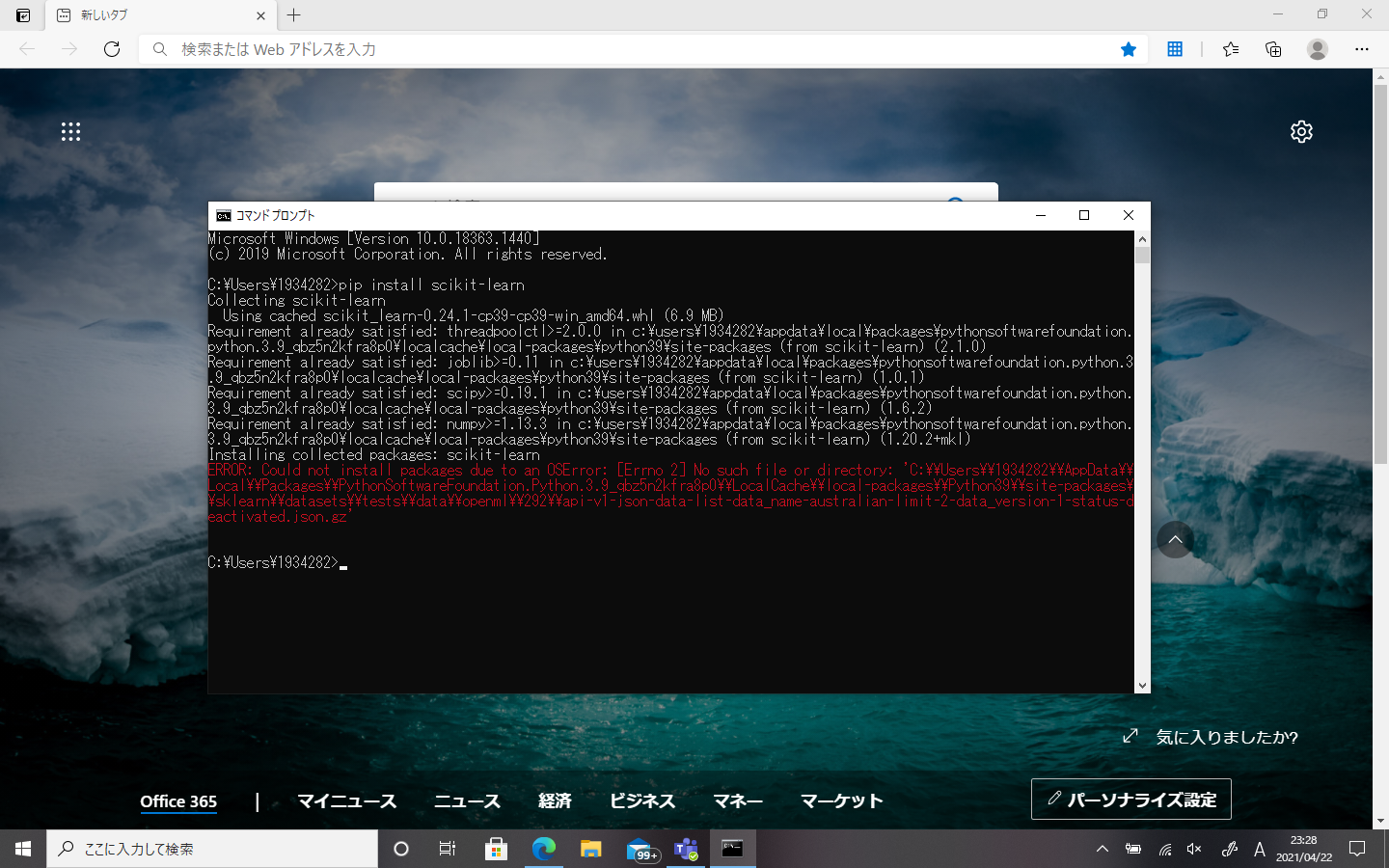

![Could not install packages due to an EnvironmentError: [Errno 2] No such file or directory | bobbyhadz Could Not Install Packages Due To An Environmenterror: [Errno 2] No Such File Or Directory | Bobbyhadz](https://bobbyhadz.com/images/blog/python-could-not-install-packages-due-to-environmenterror-no-such-file-or-directory/windows-long-paths-enabled.webp)
![安装pytorch报错ERROR: Could not install packages due to an OSError: [Errno 28] No space left on device - 小徐小徐至死不渝- 博客园 安装Pytorch报错Error: Could Not Install Packages Due To An Oserror: [Errno 28] No Space Left On Device - 小徐小徐至死不渝- 博客园](https://img2023.cnblogs.com/blog/1842194/202303/1842194-20230303204711728-179824739.png)
![pip install実行時にエラー「ERROR: Could not install packages due to an EnvironmentError: [Errno 13] 許可がありません:」が発生した場合の対処法 | mebee Pip Install実行時にエラー「Error: Could Not Install Packages Due To An Environmenterror: [Errno 13] 許可がありません:」が発生した場合の対処法 | Mebee](https://mebee.info/wp-content/uploads/2019/12/python.png)
![ERROR: Could not install packages due to an OSError: [WinError 5] アクセスが拒否されました - あれこれ置き場 Error: Could Not Install Packages Due To An Oserror: [Winerror 5] アクセスが拒否されました - あれこれ置き場](https://xs735978.xsrv.jp/wp-content/uploads/2023/06/default-300x266.png)
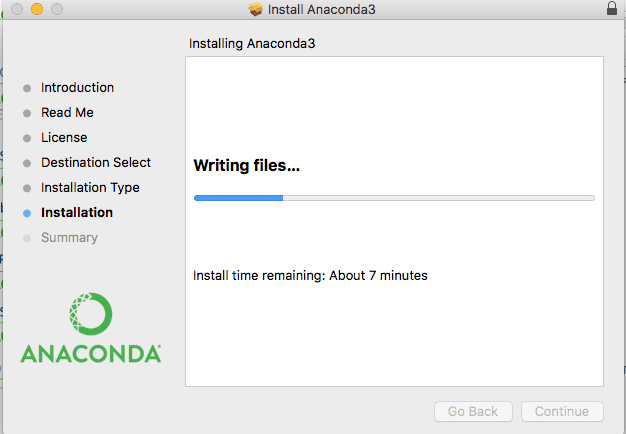






![Could not install packages due to an OSError [FIX] - YouTube Could Not Install Packages Due To An Oserror [Fix] - Youtube](https://i.ytimg.com/vi/Mwqs6167ZfY/hq2.jpg?sqp=-oaymwE8CKgBEF5IWvKriqkDLwgBFQAAAAAYACUAAMhCPQCAokN4AfABAfgBzgWAAoAKigIMCAAQARhlIGUoZTAP&rs=AOn4CLDKOEQxTGVWmr-Kb0j4baB7YGn4hQ)

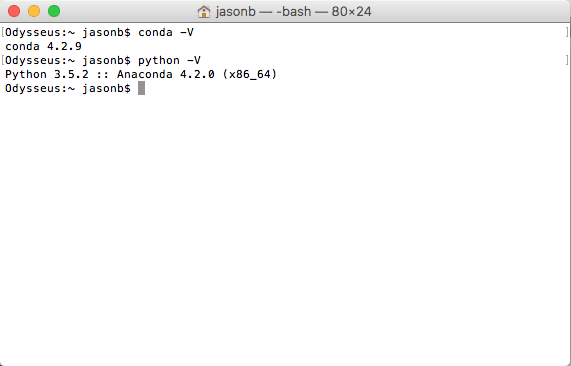
![What Do I Do If Error Message Error: Could Not Install Packages Due To An Oserror: [Errno 2] No Such File Or Directory > 학습 | 매크로 커뮤니티 – 업무 자동화 (Ai Rpa 매크로)” style=”width:100%” title=”ERROR: Could not install packages due to an OSError: [Errno 2] No such file or directory > 학습 | 매크로 커뮤니티 – 업무 자동화 (AI RPA 매크로)”><figcaption>Error: Could Not Install Packages Due To An Oserror: [Errno 2] No Such File Or Directory > 학습 | 매크로 커뮤니티 – 업무 자동화 (Ai Rpa 매크로)</figcaption></figure>
<figure><img decoding=](https://i.imgur.com/TUGc0Tw.png)
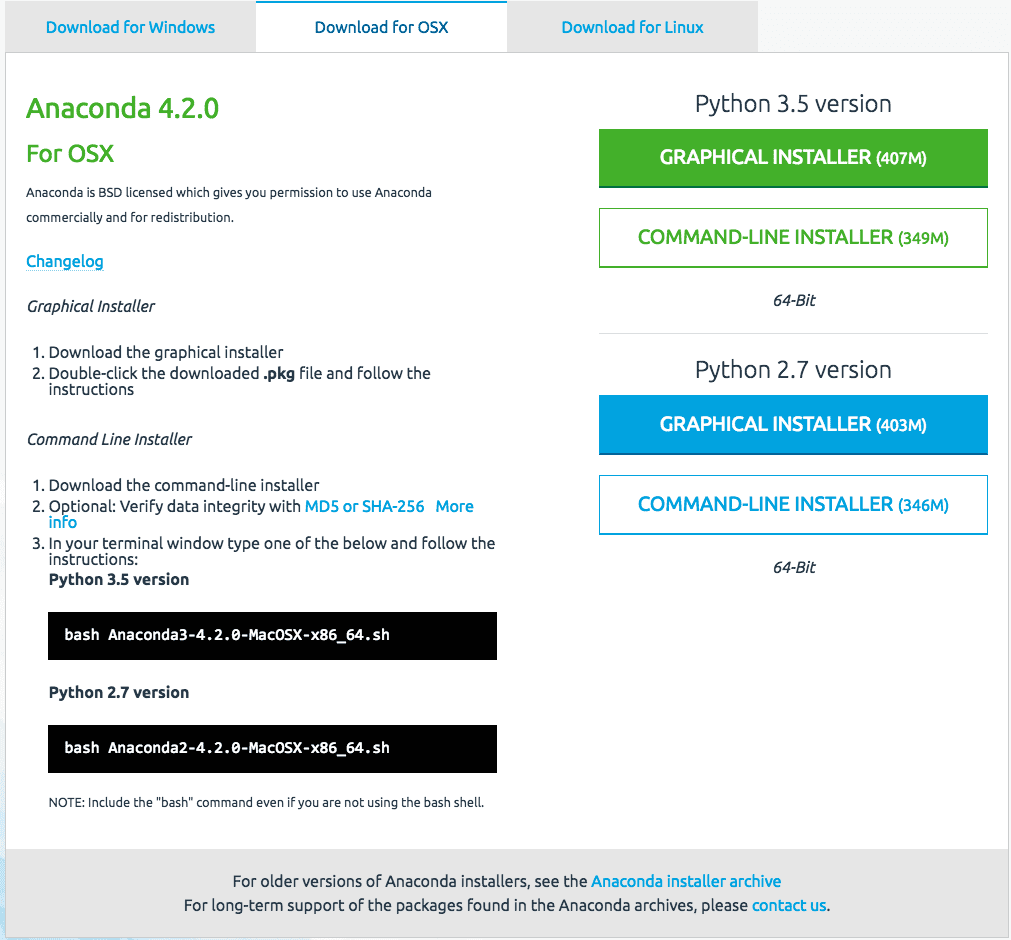

![pip3 installでエラー [Errno 13] Permission denied - Qiita Pip3 Installでエラー [Errno 13] Permission Denied - Qiita](https://qiita-user-contents.imgix.net/https%3A%2F%2Fcdn.qiita.com%2Fassets%2Fpublic%2Farticle-ogp-background-9f5428127621718a910c8b63951390ad.png?ixlib=rb-4.0.0&w=1200&mark64=aHR0cHM6Ly9xaWl0YS11c2VyLWNvbnRlbnRzLmltZ2l4Lm5ldC9-dGV4dD9peGxpYj1yYi00LjAuMCZ3PTkxNiZ0eHQ9cGlwMyUyMGluc3RhbGwlRTMlODElQTclRTMlODIlQTglRTMlODMlQTklRTMlODMlQkMlRTMlODAlODAlNUJFcnJubyUyMDEzJTVEJTIwUGVybWlzc2lvbiUyMGRlbmllZCZ0eHQtY29sb3I9JTIzMjEyMTIxJnR4dC1mb250PUhpcmFnaW5vJTIwU2FucyUyMFc2JnR4dC1zaXplPTU2JnR4dC1jbGlwPWVsbGlwc2lzJnR4dC1hbGlnbj1sZWZ0JTJDdG9wJnM9OGQzMTc3ODJkZGQ5YmIyM2IzNjdhNmY3M2ExMjgxNTk&mark-x=142&mark-y=112&blend64=aHR0cHM6Ly9xaWl0YS11c2VyLWNvbnRlbnRzLmltZ2l4Lm5ldC9-dGV4dD9peGxpYj1yYi00LjAuMCZ3PTYxNiZ0eHQ9JTQwc2hpX3Rhbm1hbiZ0eHQtY29sb3I9JTIzMjEyMTIxJnR4dC1mb250PUhpcmFnaW5vJTIwU2FucyUyMFc2JnR4dC1zaXplPTM2JnR4dC1hbGlnbj1sZWZ0JTJDdG9wJnM9MDczNzlhMDAxZGJiYTMxYmI5MTZjZmI4ZTRkMWM2MzQ&blend-x=142&blend-y=491&blend-mode=normal&s=14ed71d79cf8e9f1ed1c0fbe5835efa2)
Article link: could not install packages due to an oserror.
Learn more about the topic could not install packages due to an oserror.
- Python: Could not install packages due to an OSError: [Errno 2 …
- Could not install packages due to an OSError: [WinError 2 …
- 4 Ways to Fix the Pip Install Not Working Issue
- How to Install PIP on Windows ? – GeeksforGeeks
- Defaulting to User Installation Because Normal Site-packages Is …
- Pip Command Not Found on Windows: A Guide | Built In
- Fix Python Could not install packages due to an … – sebhastian
- Could not install packages due to an OSError – Lightrun
- “ERROR: Could not install packages due to an OSError …
- pip could not install packages due to an oserror winerror 5 …
See more: nhanvietluanvan.com/luat-hoc